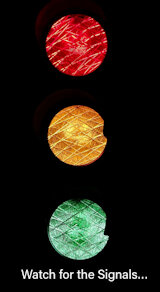Positive or Toxic Disruptors
Do you have a positive or toxic disruptor currently on your team?
Maybe you recognise this scenario. You have someone on your team that has great energy, passion and is a real ‘driver’. They push to move on new ideas, break rules, push the team around them and make sure they are connected with the right people to champion their cause. New initiatives get started, and they’ll talk in your meetings about the great things that are being done.
Checking in on what’s happening, leaders may well regard that this is highly positive and ‘great disruption’ and ‘moving things along fast’. But the real question behind the scenes is “what for?” and “at what cost?”. Beware the toxic superhero vs the sustainable innovator.
Here’s the thing, sometimes the “cost” of the toxic superhero will be inside your team, an erosion of spirit over time. Because the real question is truly about where this is all going, how you are choosing to get there and who’s with you along the way. There are choices to be made once you’ve established where you want to go. And those choices will affect everyone. So you probably need to make sure that everyone has understood and is ready to go with those choices, in the way that everyone is willing to and expects to. You also need to be checking in on whether it’s actually happening that way.
I would say that I absolutely want to have positive disruptors on my team. I’ve been lucky enough to have quite a few who’ve worked with me and for me over the years. Without them, there would not have been the biggest transformations and results along the way. I would also say that the biggest successes have always been celebrated as team successes, rather than as a result of one superhero. That does not diminish the injection of energy and passion that these positive disruptors brought. Rather it celebrates that they also brought everyone along, alongside other disruptors too.
So what made them positive rather than a negative or toxic disruptors?
I have unfortunately experienced some strong toxic disruptors. And I am absolutely sure that I and others did not spot them fast enough at the time. Don’t you just love hindsight!
But what is it that made them toxic? To be honest, I would say that the one element that makes the biggest difference here is when their own self purpose supersedes that of the team. The toxicity hits when this becomes apparent to those around them which may not be for some time. The strongest toxic disruptors may succeed in hiding this for some time. In the end, the hidden agenda, the alternative motive, incongruent behaviours all add up to the dismantling of the very team culture and environment you were seeking to foster.
Watch for the signals. Most likely there is some background conversation going on when toxicity has entered the team. This chatter may or may not come immediately to your attention. Sometimes, what is said in the background may not be prepared to be said in front of everyone. It may simply show up as a lack of engagement from some in the team, going quiet, or even just not talking at all in front of the whole group. This is what is “in the air” and requires a level of listening that rises above the words and detects the vibe, discovering what is not being said. More than likely, at some point the alarm may be sounded by something going wrong or somebody speaking up – but it might be a little late and harder to address by then.
The lesson is an important one. Harnessing the power of the creative, hardworking and innovative forces in the team is your duty. Your team is naturally creative and resourceful, and need that strong sense of purpose to work together. They also need to understand each other and how they can each best contribute. In the words of my drumming hero, Neil Peart, “it seems to be that the only way you can have a truly creative aggregate of people is if they’re all contributing in different ways”. If you don’t do the homework with them on what that really means, and where they are heading as a result you risk the accidental release of the toxic demon.
In short, it comes down to the strong foundations that the team must lay together.
The first is the clarity of shared purpose for what the team is truly here to do. Not a goal or an objective, but a clear sense of why the team exists at all.
The second is to understand who is on the team, as individuals and contributors. Each one person will have their own set of personal values – ready to be triggered positively or negatively. Understanding how these work collectively together will help to define “how” they can successfully work as a united team, with behaviours they can expect from each other.
The third is the ongoing review and honest transparency of what is ‘going on’. The shared health checks along the way that not only focus on the operational results but how they are being made and what can be improved.
In reality, when you do this homework well it might become apparent that someone in the team is not really on board. That’s ok. In fact, discovering it early can be the biggest blessing for everyone. You will have nipped any submerged toxicity in the bud, and most likely will have released a positive outcome for each and every individual who stays or leaves.

